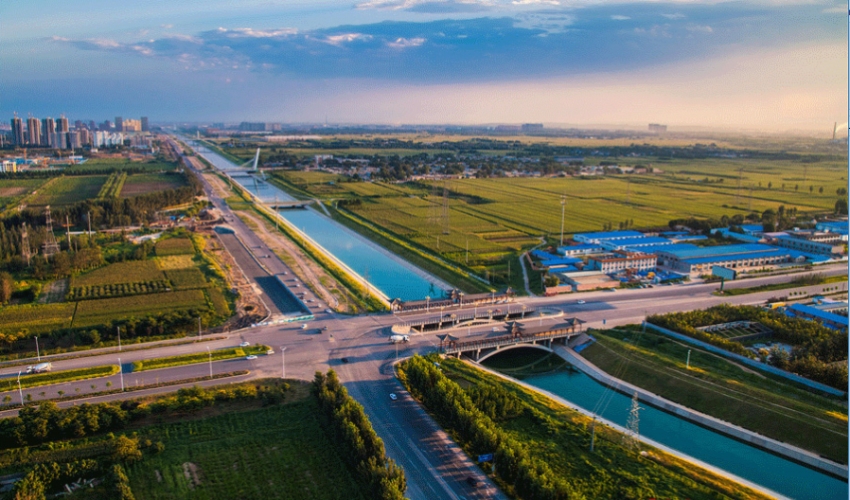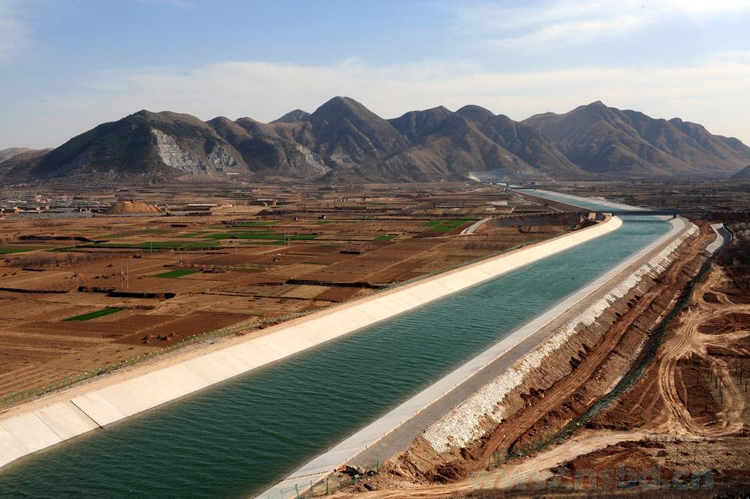The Chinese South–North Water Transfer Project: a gigantic and complicated engineering approach to water management

The South-to-North Water Diversion Project (SNWDP), also called the South–North Water Transfer Project, is an ongoing Chinese effort to channel 45 billion m3 of water annually from the Yangtze River in southern China to the country's less fertile northern regions, through three canal systems. The SNWDP, which has up to now cost more than $79 billion, is the largest and longest water diversion project in the world, and benefits the greatest number of people and regions.
The South-to-North Water Diversion Project (SNWDP), also called the South–North Water Transfer Project, is an ongoing Chinese effort to channel 45 billion m3 of water annually from the Yangtze River in southern China to the country's less fertile northern regions, through three canal systems. The SNWDP, which has up to now cost more than $79 billion, is the largest and longest water diversion project in the world, and benefits the greatest number of people and regions.
Even though the idea was studied for over half a century, starting in the 1950s, the project officially commenced on December 27, 2002, aiming to alleviate severe water issues in Northern China. Major northern cities such as Beijing and Tianjin suffer from climate change, water pollution and frequent droughts. The SNWDP is expected to strengthen urban water supply and upgrade water quality, promote sustainable socioeconomic development and improve the ecological environment in the area. However, there are some concerns regarding water pollution (ex. factories along the Eastern Route may render the water unfit to drink).
The three routes
The SNWDP consists of three water diversion projects: the East Route Project (ERP), the Middle Route Project (MRP) and the West Route Project (WRP), diverting water from the lower, middle, and upper reaches of the Yangtze River respectively. It also connects four major rivers—the Yangtze River, the Huai River, the Yellow River and the Hai River. Phase I of the ERP and Phase I of the MRP are both in operation since 2013 and 2014 respectively, whereas the controversial Western Route is expected to be ready by 2050.

During its design, construction and operation phases, the project has faced multiple challenges, such as:
- the displacement of an estimated 330,000 people for the expansion of the Danjiangkou reservoir, which marked the beginning of the project's middle route
- the heightening of the Danjiangkou Reservoir concrete dam
- the building of a tunnel across the Yellow River
- the structural safety and quality control of a super-large-diameter prestressed concrete cylinder pipe (PCCP)
- the design and construction of a large-sized canal
- the optimal structural design of a large-flow prestressed concrete aqueduct
- the treatment of an expansive soil (rock) canal slope
- foundation treatment in coal-mining hollowed areas
- water head allocation in long-distance water transfer
- water diversion during the ice period
- the installation and operation of pumping devices in large pumping stations.


Media
Want to read more like this story?

Water pipe bridge collapses in Japan: people forced to line up for supplies
Oct, 03, 2021 | NewsA water pipe bridge over the Kinokawa River in Japan collapsed on October 3. One day after the coll...

Riverton Redevelopment Groundwater Treatment Project of the Year Award
Feb, 11, 2025 | NewsKeller received the 2024 Groundwater Treatment Project of the Year award from The Dewatering Instit...

UK government considers building Scotland-Northern Ireland bridge
Sep, 13, 2019 | NewsAccording to Boris Johnson, Prime Minister of the United Kingdom, building a bridge between Scotland...

Keller's water treatment expertise helps DC project
Feb, 19, 2021 | NewsWhile Keller is renowned throughout the world for its wide range of geotechnical solutions, perhaps...

An aqueduct dating back to 125 A.D., located under the city of Athens, is being explored
Jun, 08, 2018 | NewsResearchers started the underground mapping of a 25km water supply network. Nowadays, it still seems...

The Dutch solution to rising seas
May, 01, 2018 | NewsIn a country vulnerable to floods, water management engineering is outstanding, with the chance of f...

Skyscraper that will conduct cryptocurrency mining
Jun, 11, 2019 | NewsA new project, designed for the 2019 Evolo Skyscraper Award, involves the construction of a skyscrap...

Video: 'Thirsty' Concrete Absorbs Water!
Sep, 28, 2015 | NewsThe cement Topmix is designed to have a super-absorbent masking surface that allows water to seep th...

Protecting Toronto’s Port Lands
Jan, 21, 2022 | NewsThe potential of the Port Lands waterfront has long been unrealized and under threat from flooding....
Trending

Spectacular interchanges around the world

New Release - STAAD.Pro 2024 - 2

ADINA 2025 for Structural WorkSuite

ADINA 2025 New Release!

Concrete Buildings as Rechargeable Batteries

Powerful earthquake shakes central Philippines, dozens killed


